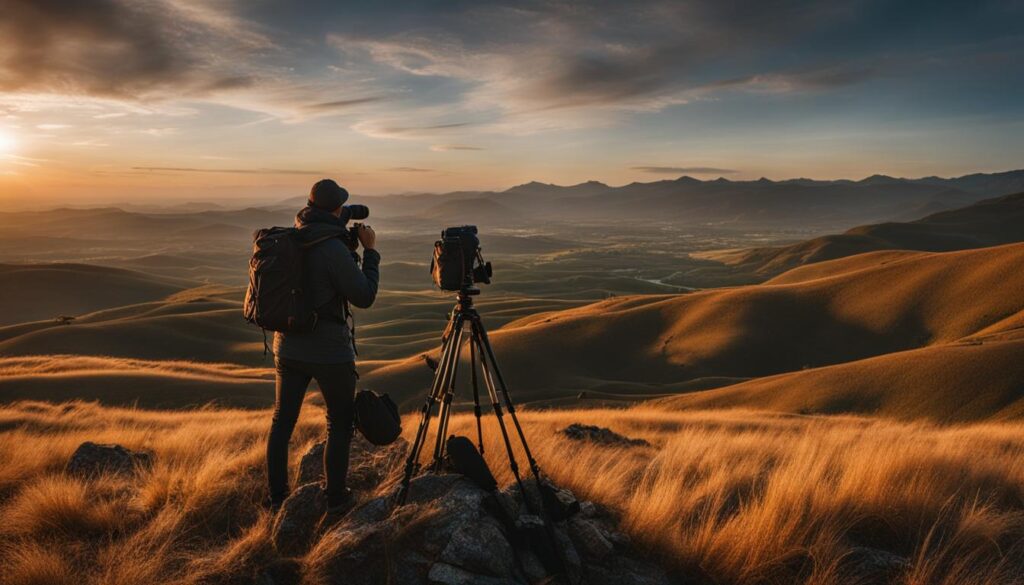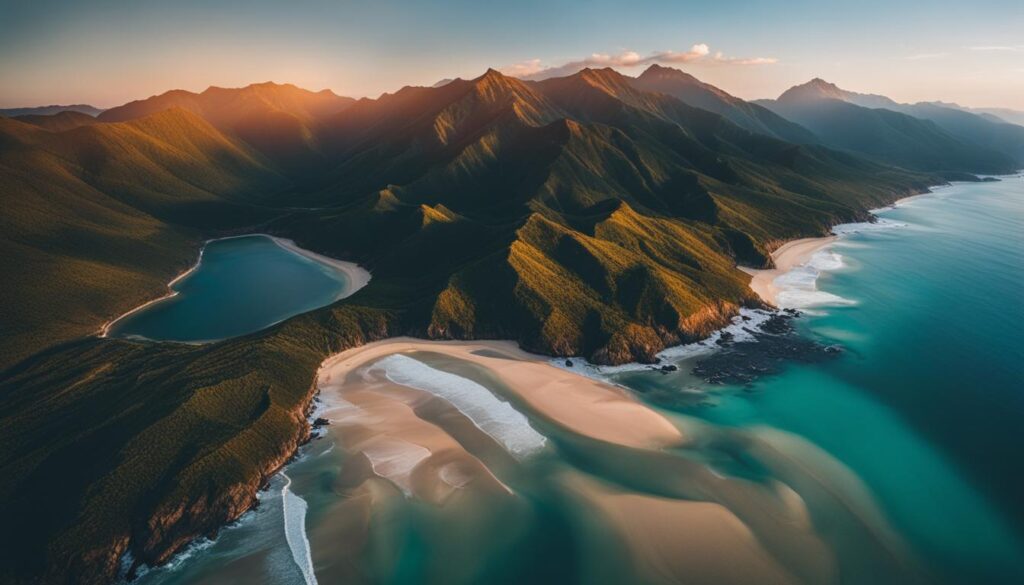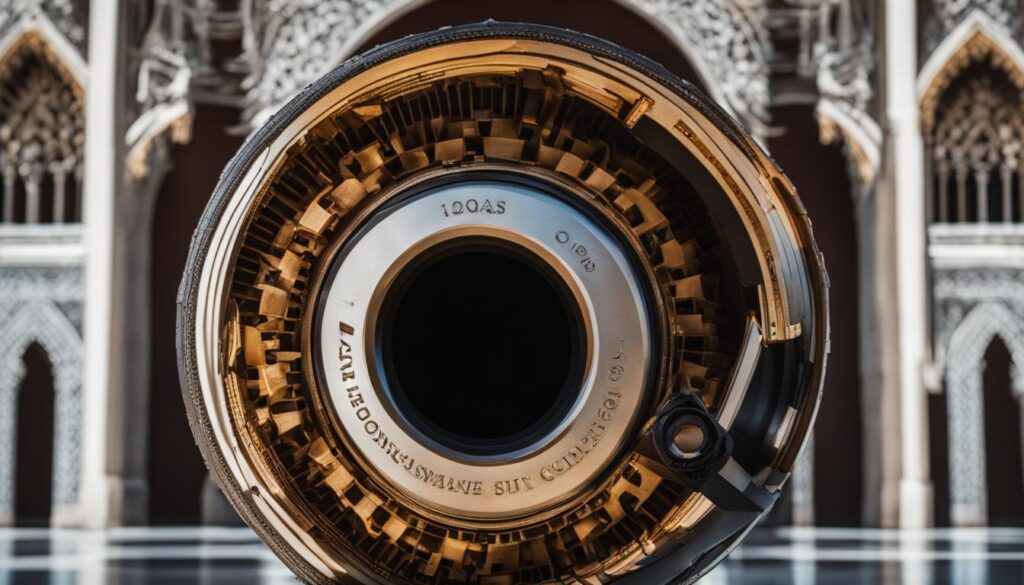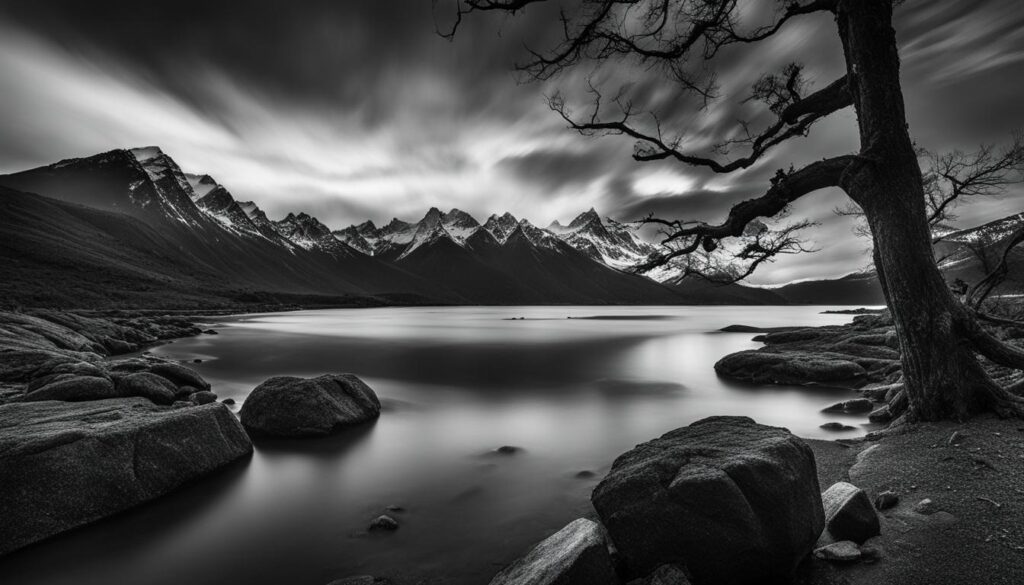We may earn money or products from the companies mentioned in this post.
Traveling to different parts of the world is not only about experiencing new cultures and cuisines, but it’s also a chance to capture unforgettable moments through the lens of your camera. As an enthusiast of travel photography, you have the opportunity to showcase the beauty of a place through your images, and inspire others to explore the world around them.
In this comprehensive guide, we will provide you with valuable insights and practical tips to master the art of travel photography. From selecting the right gear to capturing stunning images, this guide will provide the inspiration and knowledge needed to create breathtaking travel photographs.
Key Takeaways
- Travel photography is a great way to capture the essence and beauty of a place through images.
- Choosing the right gear is crucial for travel photography.
- Techniques and composition principles can enhance your photography skills.
- The world is full of breathtaking locations that are perfect for travel photography.
- Editing is an integral part of the travel photography process.
Essential Travel Photography Gear
Travel photography is a unique genre that requires specific gear to capture stunning images. The right equipment can make a significant difference in the quality of your photographs. Here are some essential travel photography gear and equipment:
Camera
Choosing the right camera is crucial for travel photography. A lightweight and compact camera is ideal for travel photography, as it easy to carry around. Mirrorless cameras are an excellent choice for travel photography, as they are lightweight and compact but still offer excellent image quality. Some popular options include the Sony A7 III, Fujifilm X-T3, and Canon EOS R.
Lenses
The choice of lenses is just as important as the camera itself. A versatile zoom lens with a wide aperture is ideal for travel photography. It allows you to capture a wide range of perspectives and provides excellent depth of field. The most popular travel photography lenses include the 16-35mm, 24-70mm, and 70-200mm.
Tripod
A tripod can help stabilize your camera and prevent camera shake, which is especially useful for low-light situations and long exposures. A lightweight and compact tripod is ideal for travel photography, such as the Manfrotto BeFree or the Joby Gorillapod.
Batteries and Memory Cards
Be sure to bring extra batteries and memory cards with you on your travels. You don’t want to run out of power or storage space in the middle of a shoot.
Accessories
Accessories such as a remote shutter release, filters, and a camera bag are also important for travel photography. A remote shutter release can help prevent camera shake, while filters can help you achieve specific effects such as polarizing or neutral density. A camera bag can protect your gear and make it easy to carry around.
Investing in the right travel photography gear and equipment can significantly improve the quality of your images. However, always keep in mind that the most important aspect of travel photography is the creativity and vision of the photographer.
Capturing Great Travel Photos: Techniques and Composition
Taking stunning travel photos requires more than just having the right gear. It also involves understanding the key techniques and composition principles that can enhance your photography.
Mastering Lighting
One of the most critical elements to consider when taking travel photos is lighting. Without proper lighting, your photos can appear dull and lackluster. The best time to take photos is during the golden hour, which is an hour after sunrise or an hour before sunset. At this time, the light is soft and warm, casting a beautiful glow over your subject. If you’re shooting during the day, avoid harsh midday sun and seek out shaded areas or use a diffuser to soften the light.
Understanding Framing
Framing is all about how you position your subject within the frame. It can make or break a photo, as it impacts the composition and helps to tell a story. When framing your shot, consider the rule of thirds, which suggests dividing your frame into thirds vertically and horizontally, resulting in nine equal boxes. Positioning your subject at the intersection points can create an aesthetically pleasing composition.
The Rule of Odds
The rule of odds is another composition principle that can create visually appealing photos. It suggests that having an odd number of subjects in your frame can create a more dynamic and balanced composition. For example, instead of photographing two trees, take a photo of three.
By mastering lighting, understanding framing, and applying the rule of odds, you can elevate your travel photos and create stunning works of art that capture the essence and beauty of the world.
Exploring the Best Travel Photography Locations
Travel photography is all about capturing the beauty and essence of the world around us. From iconic landmarks to hidden gems, there are countless destinations that offer incredible opportunities for photography. In this section, we will take you on a virtual tour of some of the best travel photography locations to spark your inspiration.
The Grand Canyon, Arizona
The Grand Canyon is one of the most breathtaking natural wonders of the world. With its vibrant colors and unique rock formations, it offers numerous opportunities for stunning landscape photography. Whether you visit at sunrise or sunset, you are sure to capture incredible images.
Santorini, Greece
Santorini is a picturesque Greek island that is known for its whitewashed buildings, stunning coastline, and breathtaking sunsets. With its picturesque streets and charming alleys, this island is a dream destination for any travel photographer.
Machu Picchu, Peru
Machu Picchu is an ancient Incan city that is perched atop the Andes Mountains. This iconic destination offers numerous opportunities for photography, from panoramic views of the ruins to up-close shots of intricate stone structures.
Paris, France
Paris, the city of love and lights, is a dream destination for every travel photographer. From the iconic Eiffel Tower to the romantic streets of Montmartre, this city never fails to inspire and captivate.
Banff National Park, Canada
Banff National Park is a stunning destination that is known for its crystal clear lakes, snow-capped peaks, and vibrant wildlife. With its vast landscapes and natural beauty, this location is perfect for landscape photography.
These are just a few of the many destinations that offer incredible opportunities for travel photography. Remember, the best travel photographs are the ones that capture the unique beauty and essence of the world around us. So, grab your camera and start exploring!
Editing Tips for Travel Photography
Editing your travel photographs is a crucial step in the process of creating unforgettable images that truly capture the essence of the places you visit. Here are some essential travel photography editing tips to help you elevate your post-processing skills:
1. Don’t Overdo It
When editing travel photos, it can be tempting to apply too many adjustments or filters, resulting in an image that looks artificial or over-processed. Remember, the goal is to enhance the natural beauty of the scene, not to mask it. As a general rule, start with subtle adjustments and build up gradually until you achieve the desired look.
2. Get the Exposure Right
Exposure is a critical element of any photograph, and it can make or break an image. When editing your travel photos, pay close attention to exposure levels to ensure that the image is neither too bright nor too dark. Use simple adjustments like brightness and contrast to fine-tune the exposure and highlight the key elements of the scene.
3. Experiment with Colors
Colors play a significant role in travel photography, and they can evoke different emotions and moods. When editing your travel photos, experiment with color adjustments to add vibrancy and depth to the scene. Use tools like saturation and color temperature to fine-tune the colors and create a cohesive look.
4. Crop the Image
Cropping is a powerful tool that can help you focus on the most compelling elements of the scene and eliminate distractions. When editing your travel photos, experiment with different cropping ratios and positions to create a balanced composition that highlights the subject.
5. Remove Distractions
Travel photographs can be marred by distracting elements like power lines, trash cans, or people walking in the background. Use the clone tool or the healing brush to remove these distractions and create a clean, uncluttered look. However, avoid removing elements that are essential to the scene or alter the reality of the place.
By following these simple editing tips, you can take your travel photography to the next level and create images that truly capture the essence of your travels. Remember, practice and experimentation are key to becoming a skilled travel photographer.
Photography Inspiration: Seeing the World through a Lens
Travel photography is an art, and like any art form, it requires inspiration. While it is essential to master the technical skills of photography, it is also crucial to cultivate a creative eye and use your unique perspective to capture the beauty and essence of the world. In this section, we will explore different sources of inspiration to help you take your travel photography to the next level.
Renowned Travel Photographers
One of the best ways to find inspiration for your travel photography is to study the work of renowned travel photographers. These photographers have spent years honing their craft and capturing the world’s most beautiful locations and moments. By analyzing their photographs and studying their techniques, you can learn valuable lessons and gain new insights into how to improve your own photography.
| Photographer | Specialty | Inspiring Quote |
|---|---|---|
| Jimmy Nelson | Indigenous communities | “The world is a beautiful place, and I am here to capture it.” |
| Steve McCurry | Portraiture | “My Life is shaped by the urgent need to wander and observe, and my camera is my passport.” |
| Annie Griffiths | Women and girls around the world | “I have a vision of the world as a family, and I’m just taking pictures of it.” |
As you study the work of these and other photographers, pay attention to their use of light, composition, and color. Try to understand how they capture emotion and convey a sense of place through their images.
Finding Inspiration in Unexpected Places
Inspiration can come from anywhere, from the beauty of nature to the hustle and bustle of a busy city street. To find inspiration for your travel photography, you need to keep your eyes open and be willing to explore. Look for unique perspectives, interesting patterns, and moments that capture the human experience.
Here are some ideas for finding inspiration in unexpected places:
- Explore a local market and capture the vibrant colors and textures of the produce and products.
- Walk through a quiet neighborhood and look for moments of stillness and solitude.
- Visit a park or nature preserve and capture the beauty of the natural world.
- Attend a cultural celebration or festival and capture the energy and excitement of the event.
Remember that inspiration can come from anywhere, and sometimes the most unexpected locations can provide the most stunning images.
Cultivating a Creative Eye
While technical skills are essential for travel photography, creativity is equally important. Cultivating a creative eye means looking at the world with fresh eyes and finding new ways to capture the beauty and essence of your surroundings.
Here are some tips for cultivating a creative eye:
- Experiment with new angles and perspectives.
- Try using different lenses or camera settings to create unique effects.
- Look for patterns, textures, and shapes in your surroundings.
- Use light and shadow creatively to capture mood and emotion.
By cultivating a creative eye, you can take your travel photography to new heights and capture images that are truly unique and inspiring.
Wrap Up
As we come to the end of our guide, we hope that these tips and insights have given you the inspiration and knowledge needed to create breathtaking travel photographs. Remember, travel photography is not just about technical skills; it is also about seeing the world through a lens and capturing its beauty and essence. So, go out there, explore the world, and capture its wonders through your lens.
Conclusion
As we wrap up our guide for enthusiasts on mastering the art of travel photography, we hope that you have found it informative and helpful. Remember that becoming a skilled travel photographer takes practice, patience, and a willingness to experiment. With the right gear, technical skills, and creative eye, you can capture the beauty and diversity of the world through your lens.
Whether you are a seasoned professional or a beginner just starting, always keep learning and exploring to improve your craft. There is always something new to discover and a fresh perspective to gain. Keep pushing yourself out of your comfort zone and challenge yourself to capture new angles, lighting, and subjects.
Thank you for reading our travel photography guide for enthusiasts. We hope it has inspired you to pursue your passion for travel photography and to create breathtaking images that capture the essence of the world.
FAQ
What is travel photography?
Travel photography is a genre of photography that focuses on capturing images of people, places, and cultures from around the world. It involves documenting the essence and beauty of different destinations, capturing the spirit of travel through images.
What gear do I need for travel photography?
The essential gear for travel photography includes a camera, lenses (wide-angle for landscapes, zoom for versatility), a sturdy tripod, extra batteries, memory cards, and a camera bag to protect your equipment. It’s also recommended to have a polarizing filter and a remote shutter release.
How do I take great travel photos?
To take great travel photos, consider the lighting conditions, composition, and subject matter. Pay attention to the golden hour (early morning and late afternoon) for soft and warm lighting. Experiment with different perspectives, use leading lines, and compose your shots using the rule of thirds. Be patient and observant to capture unique moments and emotions.
Where are the best travel photography locations?
The world offers countless stunning locations for travel photography. Some popular destinations include iconic landmarks like the Eiffel Tower in Paris, picturesque landscapes like the Grand Canyon in the United States, cultural hubs like Tokyo in Japan, and remote natural wonders like Iceland’s waterfalls and glaciers. The best location depends on your interests and the type of photography you enjoy.
How do I edit my travel photos?
Editing is an essential part of the travel photography process. Use photo editing software like Adobe Lightroom or Photoshop to adjust exposure, colors, and sharpness. Remove distractions, enhance details, and apply filters or presets to create the desired mood. Remember to keep the editing process natural and consistent with your vision.
Where can I find inspiration for travel photography?
Inspiration for travel photography can be found in various sources. Study the work of renowned travel photographers, explore photography books and magazines, and follow travel photography accounts on social media platforms. Immerse yourself in different cultures, observe the people and places around you, and allow your curiosity to guide you towards unexpected photo opportunities.
Affiliate Disclosure: This post may contain affiliate links. If you purchase through our link, we may receive a small commission, but at no additional cost to you. For more information, please see our Disclosure statement.



